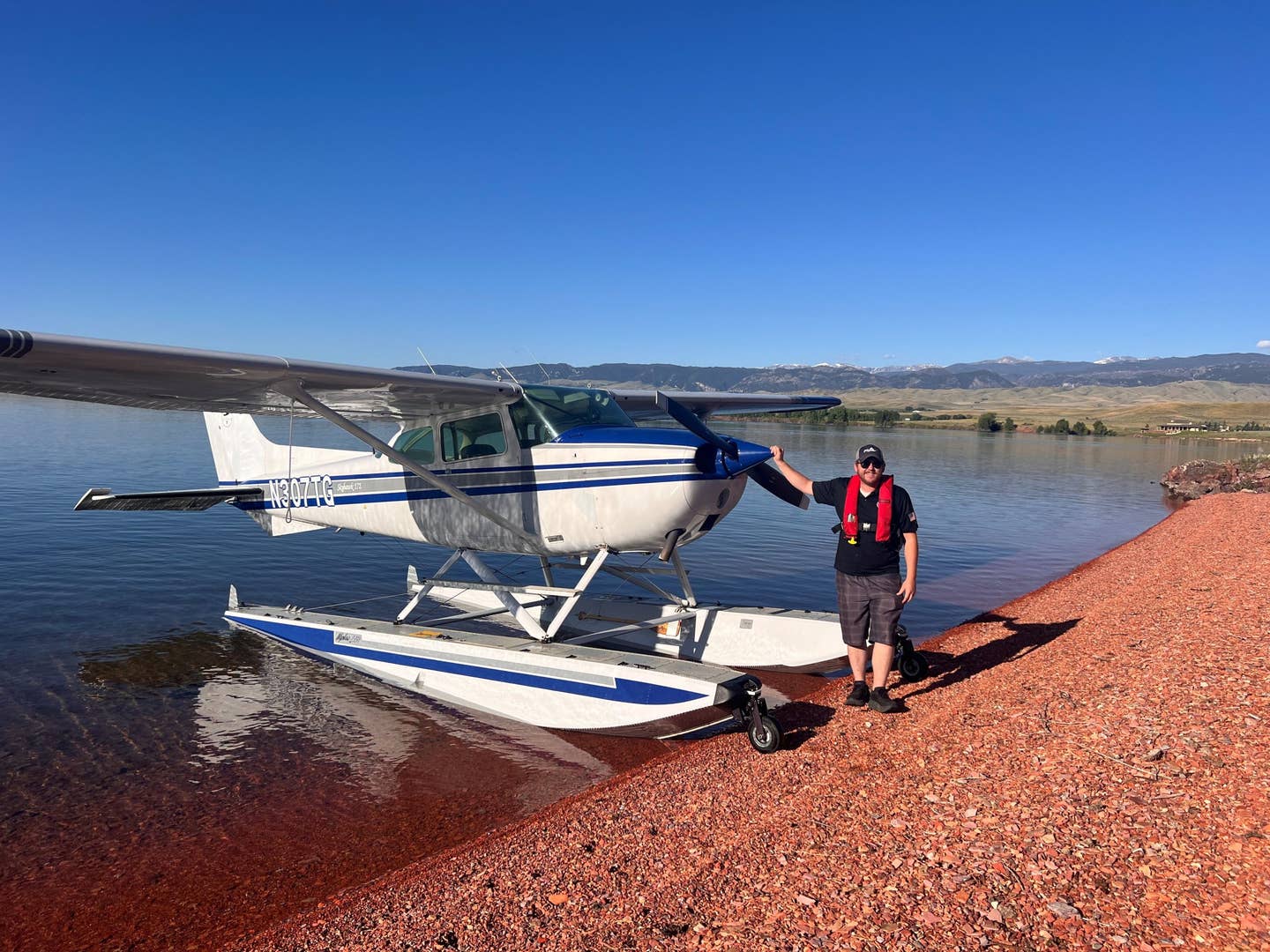Pilots Now Able to Earn Seaplane Rating in Wyoming
Permission is granted after Seaplane Pilots Association representatives meet with locals to discuss preflight and postflight inspections for aquatic invasive species.

Sheridan Pilots 307 C172 on Wipline 2350A floats. [Courtesy: Wipaire]
Pilots can now receive their single-engine seaplane (SES) rating on Lake De Smet in Wyoming, according to Wipaire, the manufacturer of Wiplines airplane floats.
Wipaire, based in St. Paul, Minnesota, has been making floats for aircraft—from Piper Cubs on up—for more than 60 years. Wipline floats may be found on aircraft all over the world, including on Lake De Smet. The 3,600-acre lake, known for its boating and fishing opportunities, is located in the north central part of the state near Buffalo, Wyoming, and managed by Johnson County.
According to Wipaire, seaplane access to the lake is possible due to efforts of J.T. Grainger, owner of Sheridan Pilots 307 flight school and field director of the Seaplane Pilots Association (SPA) Wyoming chapter, and Steve Guetter, president of the Minnesota Seaplane Pilots Association.
The pair met with county officials to discuss preflight and postflight inspections for aircraft to prevent the transport of aquatic invasive species.
“We hope this will lead to expanded statewide access.” Grainger said, adding that pilots can earn their SES rating in Sheridan Pilots 307’s C172 on Wipline 2350 floats.
Sheridan Pilots 307 is a Part 61 flight school based at Sheridan County Airport (KSHR). In addition to the float rating, the school offers training in fixed-wing wheeled aircraft and rotor wing. The school has access to multiple DPEs and is a PSI testing center for all FAA knowledge tests.
- READ MORE: Wipaire's Family on Floats
Grainger noted that Guetter—who is from Minnesota, a state known as the Land of 10,000 Lakes—has been a wealth of information and shared multiple techniques used in Minnesota to prevent seaplanes from transporting invasive species.
To prevent the transfer of invasive species, the SPA recommends:
- Using the Department of Natural Resources website or Seaplane Association mobile app
- to identify bodies of infected water prior to flight.
- Thoroughly inspecting float surfaces prior to departing a body of water.
- Wiping down float surfaces when aircraft have remained in water overnight.
- Pumping out water from float compartments prior to departing a body of water
- Visually examining water rudders and landing gear for weeds after departure.
- Cycling rudders/landing gear over unpopulated land areas prior to landing in other bodies of water.

Sign-up for newsletters & special offers!
Get the latest FLYING stories & special offers delivered directly to your inbox






